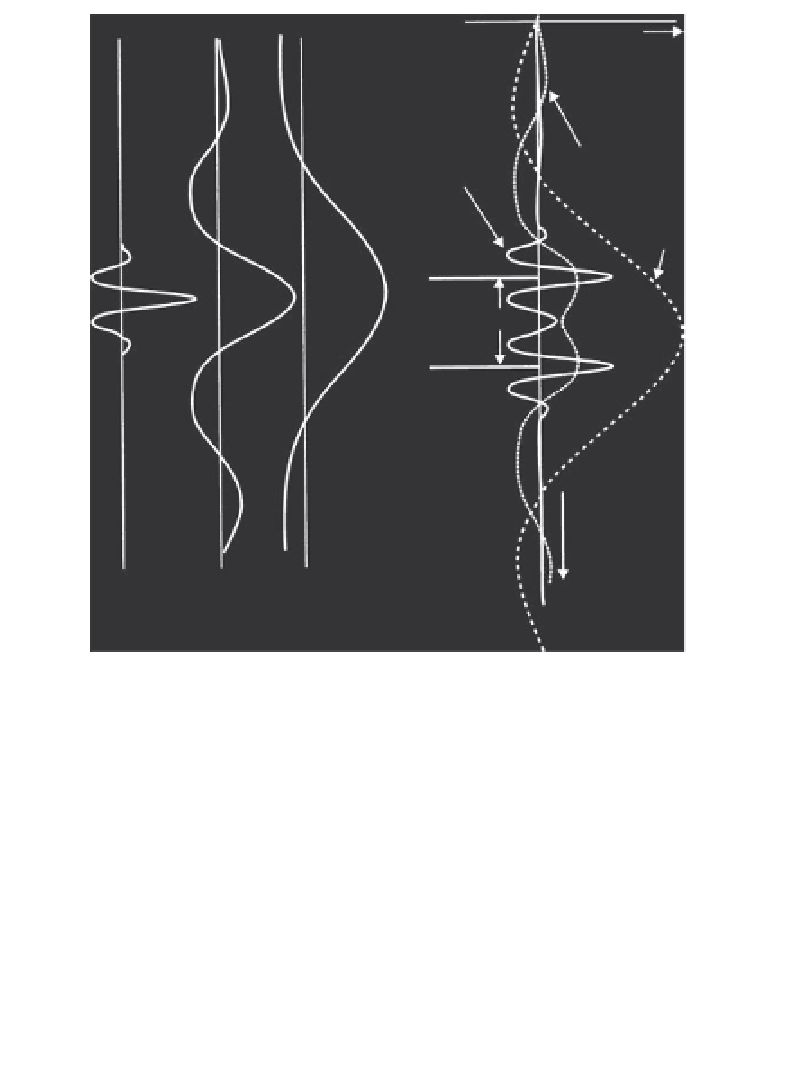Geology Reference
In-Depth Information
Amplitude
Medium pulse
Medium bandwidth
Narrow pulse
High bandwidth
Broad pulse
Low bandwidth
∆
R
Narrow pulse
High bandwidth
Medium pulse
Medium bandwidth
Broad pulse
Low bandwidth
Figure 10.5
Variation in range resolution (
R
) with changes in bandwidth.
The two interfaces, with reflection coefficients equal in both magnitude
and sign, are easily resolved by the narrow pulse, poorly resolved but still
separable by the pulse with a spatial width approximately equal to the
separation and cannot be resolved by the broad pulse. The pulses, shown
on the left, are modified Ricker wavelets (see Figure 10.4) with reduced
sidelobes, but even these produce significant peaks and troughs in the vicinity
of the interfaces at high bandwidths. The 'spatial width' is equal to pulse
width (in time) multiplied by the transmission velocity.
Depth enters into this equation because the zone of influence or 'footprint'
of a radiated pulse (equivalent to the Fresnel zone in seismics) increases with
depth, and also with velocity (Figure 10.6). The lower the velocity (higher
the permittivity), the smaller the lateral dimension of a target that can be
resolved, i.e. the radiated beam is narrower in higher permittivity materials.

